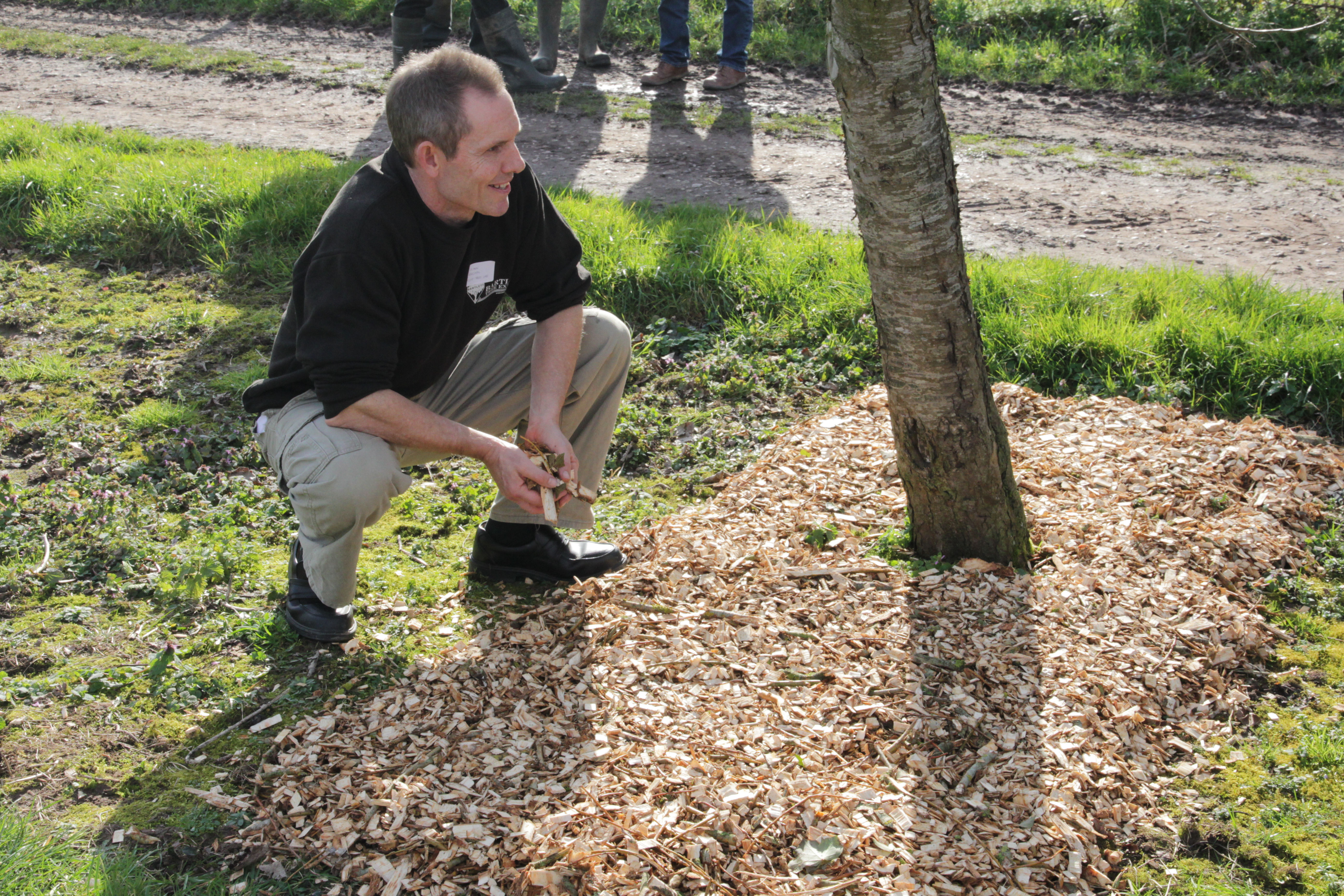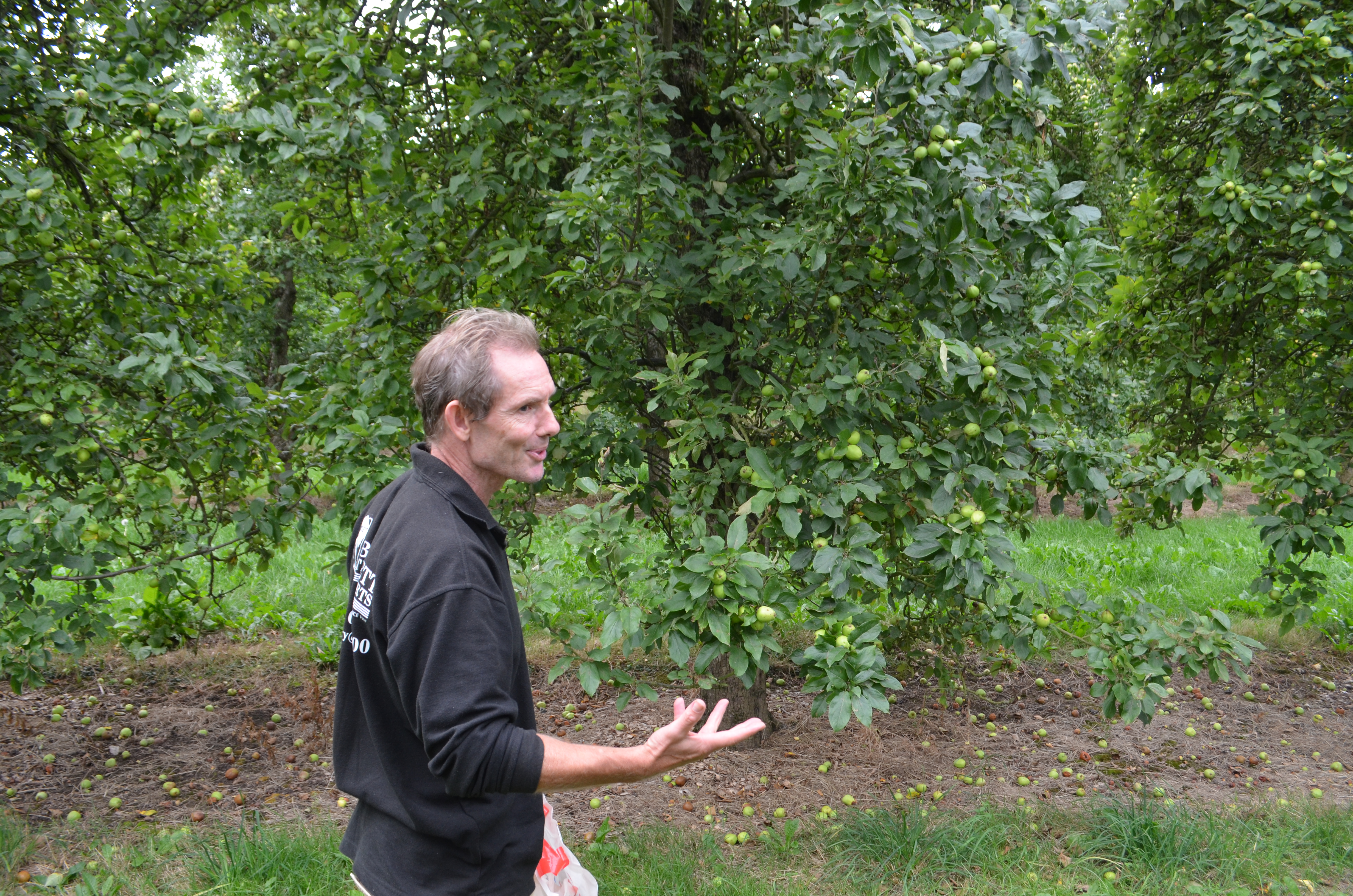







In this field lab a number of orchards across England and Wales will evaluate whether applying willow woodchip mulch around the base of trees can reduce apple and pear scab, a fungal disease which can be devastating to top fruit crops.
The trials will also look at whether willow woodchip acts as a stimulant for plant growth and development in apple and pear trees, and influences leaf nutrient and fruit sugar content.
If the results show the application of willow wood chip can control scab, it could provide an alternative to fungicidal sprays for the management of this disease.
In addition the salicylic acid content of ten willow species commonly planted in the UK will be quantified so that growers know which provide the highest SA content.
Apple scab, caused by the fungal pathogen Venturia inaequalis, can be devastating to apples, reducing fruit quality, marketable yield, and aesthetics. As a consequence, many fruit farmers frequently apply synthetic fungicides throughout the growing season to protect their crop.
Increased pathogen insensitivity to synthetic fungicides coupled with public demands to reduce use of fungicides, has placed emphasis on the development of alternative control strategies.
Previous work has shown that salicylic acid (SA) can prompt key defence mechanisms in trees; a little like a vaccination. Willow is known to have high levels of salicylic acid.
For decades trees have been mulched to reduce soil moisture stress, suppress weeds and for fertiliser. The triallists want to know whether applying a mulch made solely from willow wood chip can help with the management of apple scab. It is hoped that as the wood chip is degraded by soil and surface micro-organisms, the release of SA into the soil may prompt key defence mechanisms in the trees.
The first phase of the trial will compare the levels of salicylic acid in the ten most common UK willow species using liquid chromatography at the University of Reading.
At each trial site fifteen trees will be chosen, five for each treatment of mulched, non-mulched (controls), and sprayed. Ideally the trees should have two guard trees between treatments to minimise overlapping of treatments.
In January / February, 5kg fresh woodchip will be applied to each tree, sourced from a variety of willow species (ideally from young growth as it has higher SA content).
The incidence and severity of scab will then be assessed in September using a prearranged scale developed by the researcher (the scale can be found in the results and reports page).
The leaves and fruit from the trial trees will also be tested for nutrients and sugar content.

The field lab results have been written up and the final report can be found in the 'results and reports' tab of the field lab page. A summary is below.
Results consistently showed a “trend” across all trial sites towards lower leaf and fruit scab severity and higher leaf nutrient content following application of a willow mulch around the base of fruit trees.

Trial sites were treated with mulches made from primarily white willow species (S.alba, S.alba ‘Chermasina, S.fragalis), which a later analysis was shown to be the lowest SA containing willow species. This does raise the possibility that treating with a different willow species i.e. S. daphnoides or S. matsudana tortuosa with an inherently higher SA content would result in even lower scab severity and higher leaf nutrient content. In support of this S.daphnoides was used at the Aston Manor site where significantly lower scab levels were recorded.
At some of the sites visited the amount of willow mulch applied was far lower than that recommended (5kg per tree) while the size of the tree was quite large (4-6 metres). This raises the possibility that the overall amount of SA provided to the tree was insufficient to induce any resistance response. Consequently it could be argued that had a greater amount of mulch been applied then a lower scab severity and higher leaf nutrient content may have been recorded.
The grower protocol has been produced and can be found in the results and reports section of the field lab page. This includes tree selection guide and mulching guidelines.
A table of the different willow species and their salicylic acid content is included in the report and reproduced below:
Salicylic Acid content of the 10 most common UK willow species
|
Scientific name |
Common Name(s) |
Salicylic Acid (mg/g FW) |
|
S. daphnoides |
European violet willow |
3.21 |
|
S. matsudana tortuosa |
Chinese Willow, Corkscrew Willow |
2.33 |
|
S. caprea |
Pussy Willow, Goat Willow, Great Sallow |
1.95 |
|
S. fragilis |
Crack willow, Brittle willow |
1.65 |
|
S. alba ‘Chermesina’ |
|
1.62 |
|
S. pentandra |
Bay Willow |
0.81 |
|
S. triandra |
Almond willow; Almond leaf willow |
0.6 |
|
S. erythrotoflexuosa |
|
0.38 |
|
S. viminalis |
Basket willow/ common osier |
0.21 |
|
S. alba |
White Willow |
0.2 |
Jan 2019
Feb 2019
Sep 2019
Nov 2019

Sustainable Farming Consultancy
Tony has 18 years experience working in organic and sustainable agriculture in the UK and internationally, and is a member of the Institute of Organic Training and Advice. He studied Agricultural and Environmental Sciences at the University of Newcastle upon Tyne, and has a Masters in crop pest management from Imperial College, London. Tony was a key figure at Organic Centre Wales for nearly 15 years and left in September 2015 to set up the Sustainable Farming Consultancy.

Bartlett Tree Research Laboratory
Reading
